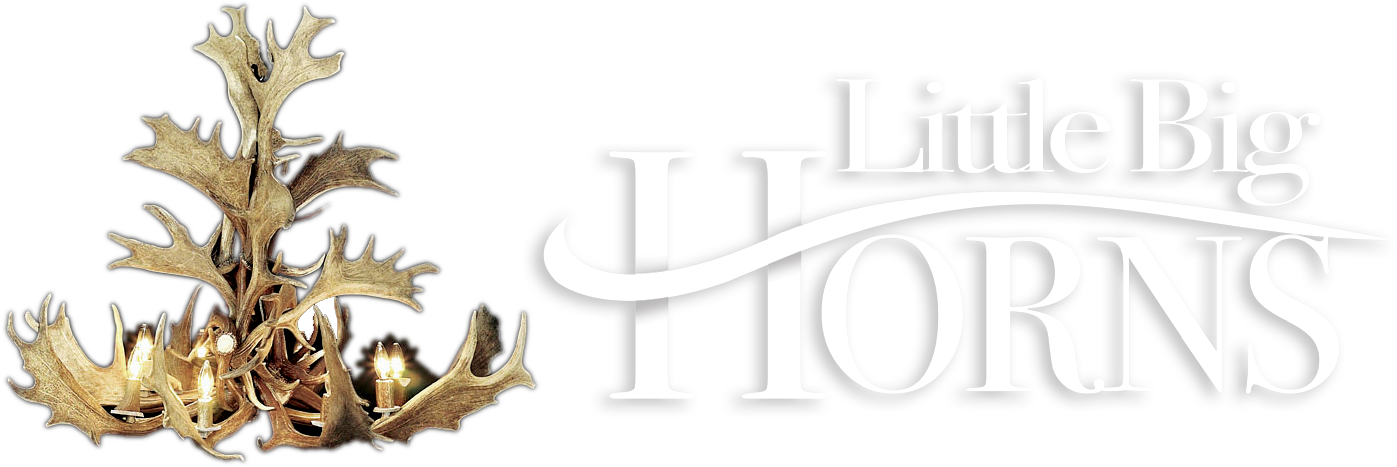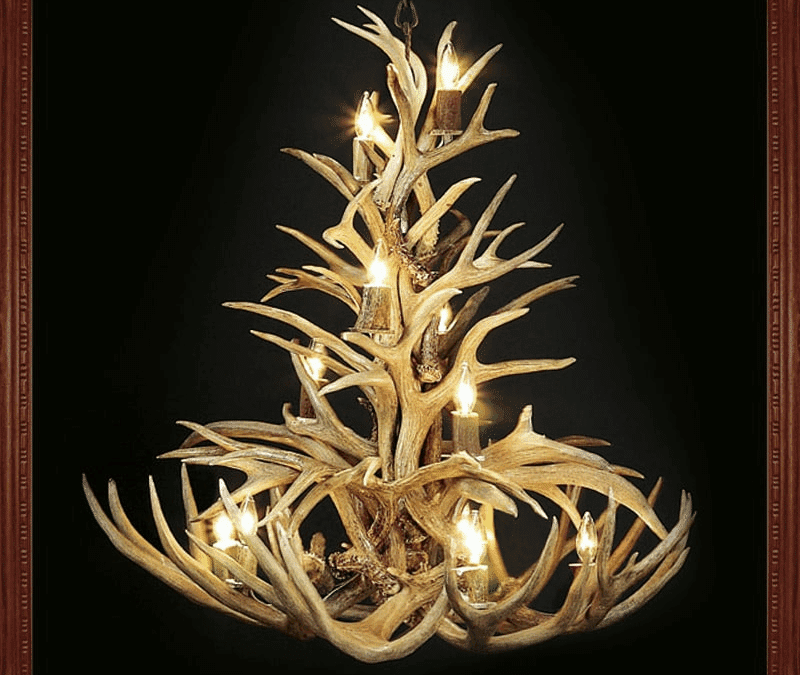Lighting is a defining feature of any room, especially when it comes to statement pieces like antler chandeliers. Whether you’re styling a rustic lodge, a contemporary farmhouse, or an upscale cabin retreat, selecting the right bulb type is essential to balancing aesthetic, function, and efficiency. Among the most debated choices: LED or incandescent? At Little Big Horns, we understand how important this decision is in bringing out the best in your space.
This guide compares LED and incandescent lighting in the context of antler chandeliers, exploring everything from energy usage and sustainability to lifespan, mood, and design integration.
Understanding LED vs Incandescent Bulbs
What is an LED Bulb?
LED (Light Emitting Diode) bulbs use a semiconductor to convert electricity into light. They are known for:
- High energy efficiency
- Long operational lifespan
- Cool operating temperatures
- Broad color temperature range
LEDs have become the preferred lighting choice for many homeowners due to their ability to provide consistent illumination while minimizing power consumption.
What is an Incandescent Bulb?
Incandescent bulbs generate light through a heated filament. Their key characteristics include:
- Classic warm glow
- Simple technology
- Lower upfront cost
- Shorter lifespan
Despite technological advancements, incandescent bulbs are still favored in some rustic settings for their nostalgic ambiance.
Lifespan and Maintenance Comparison
A major point of difference between LED and incandescent lighting is longevity. Here’s how they compare:
| Bulb Type | Average Lifespan | Replacement Frequency |
|---|---|---|
| LED | 15,000 – 50,000 hours | Once every 10–15 years |
| Incandescent | 1,200 – 2,000 hours | Several times per year |
For high or vaulted ceilings, like those often found in lodge-style homes, replacing bulbs frequently is impractical. LED bulbs drastically reduce the need for ladder work and fixture disassembly, particularly in heavier installations such as natural deer antler chandeliers.
Energy Efficiency and Environmental Impact
LED Bulbs
- Use up to 80% less energy than incandescents
- Emit less heat, reducing fire risk and cooling costs
- Mercury-free and recyclable
- Ideal for eco-conscious and off-grid living
Incandescent Bulbs
- Consume more electricity per lumen
- Generate heat, which may be undesirable in warm climates
- Have a greater carbon footprint
Homeowners seeking sustainability and lower long-term energy costs will find LEDs to be a clear winner. Many modern antler chandeliers now come pre-configured for LED compatibility, further simplifying the transition.
Mood, Aesthetics, and Design Integration
Color Temperature
| Bulb Type | Color Temperature (Kelvin) | Effect on Room Mood |
| LED | 2,200K to 6,000K | Adjustable: warm to daylight |
| Incandescent | 2,700K (fixed) | Soft, warm glow |
LED bulbs offer versatility in adjusting the ambiance of a room, making them ideal for multipurpose spaces. Dimmable LED options allow greater control, whereas incandescent bulbs emit a static warm hue.
Design Compatibility
For rustic settings like cabins or lodges, incandescent bulbs can complement the warm wood tones of deer horn chandeliers. However, LED bulbs with vintage-style filaments and soft white tones now mimic incandescent aesthetics closely, making them suitable for:
- Transitional decor
- Blended rustic-modern themes
- Commercial installations (e.g., hotels, restaurants)
Explore our curated collection of handcrafted deer antler chandeliers to visualize how different lighting choices affect the fixture’s visual tone.
Cost Analysis Over Time
While LEDs come with a higher initial price point, they provide substantial savings in the long term. Here’s a breakdown:
Energy Consumption (Over 10 Years for One Bulb)
- Incandescent: 60W × 3 hrs/day × 3650 days = 657 kWh
- LED: 9W × 3 hrs/day × 3650 days = 98 kWh
At an average rate of $0.15/kWh:
- Incandescent: ~$98.55
- LED: ~$14.70
Multiply this by the number of bulbs in your chandelier (often 6–18), and the savings become significant. For homeowners purchasing antler chandeliers for sale, understanding this long-term cost is crucial for an informed investment.
Installation Tips and Compatibility
Most antler chandeliers are compatible with standard E12 or E26 sockets. When purchasing bulbs:
- Confirm wattage limits
- Check for dimmer compatibility
- Ensure the bulb shape (e.g., candelabra, globe) matches the fixture’s visual design
LEDs tend to generate less heat, reducing the risk of thermal damage to natural antlers. This makes them particularly well-suited to larger or delicate designs, such as those in our Little Big Horns artisan-crafted line.
Choosing Bulbs for Specific Rooms
Dining Rooms
- Recommended: Warm LED or dimmable LED filament
- Benefit: Adjustable ambiance for meals and entertaining
Living Rooms & Great Rooms
- Recommended: Higher lumen LED for wide-area coverage
- Benefit: Long lifespan for hard-to-reach ceilings
Bedrooms
- Recommended: Soft white LED or low-watt incandescent
- Benefit: Cozy mood lighting
Commercial Spaces (e.g., Lodges, Restaurants)
- Recommended: LED for energy efficiency and maintenance
- Benefit: Lower long-term operational costs
Matching Lighting with Fixture Design
When styling a chandelier in coordination with other decor items, lighting can either highlight or minimize visual continuity. For a balanced look, pair your chandelier with complementary pieces like deer antler mirrors that reflect light and extend the natural aesthetic throughout the room.
Color temperature also plays a role in harmonizing materials. For example:
- Bleached antler chandeliers pair well with cooler light tones
- Stained or dark antlers benefit from warmer illumination
The right lighting not only defines your interior vibe but also enhances craftsmanship details in your fixture.
FAQs
Can I replace incandescent bulbs with LED in my existing antler chandelier?
Yes, most antler chandeliers accept both types as long as the bulb base (E12/E26) matches and the wattage is compatible.
Will switching to LED affect the appearance of my chandelier?
It can, depending on the bulb’s brightness and color temperature. Choose warm or vintage-style LEDs to preserve a traditional look.
Do LED bulbs work with dimmer switches?
Only if the LED bulb is labeled dimmable and your dimmer switch supports LED compatibility.
Are LED bulbs better for large or vaulted installations?
Yes. Their long lifespan reduces the need for frequent replacements, making them ideal for hard-to-reach fixtures.
How do I know if my chandelier is compatible with LED lighting?
Check the product specifications or consult with the manufacturer. Most chandeliers sold by Little Big Horns are LED-compatible.
Conclusion
Selecting between LED and incandescent lighting for your antler chandelier involves more than personal preference. Consider lifespan, energy use, design goals, and maintenance expectations. For modern efficiency with the flexibility of ambiance control, LED is often the superior choice. Yet for those who love the nostalgia and warmth of classic lighting, incandescent may still have a place.
At Little Big Horns, we craft chandeliers that accommodate both preferences while ensuring longevity and quality design. Whether you’re shopping for rustic elegance or modern refinement, our collection delivers functionality, artistry, and unmatched character.
To find your ideal fixture or receive guidance on bulb pairing, contact us today or browse our full inventory of handcrafted lighting solutions.

